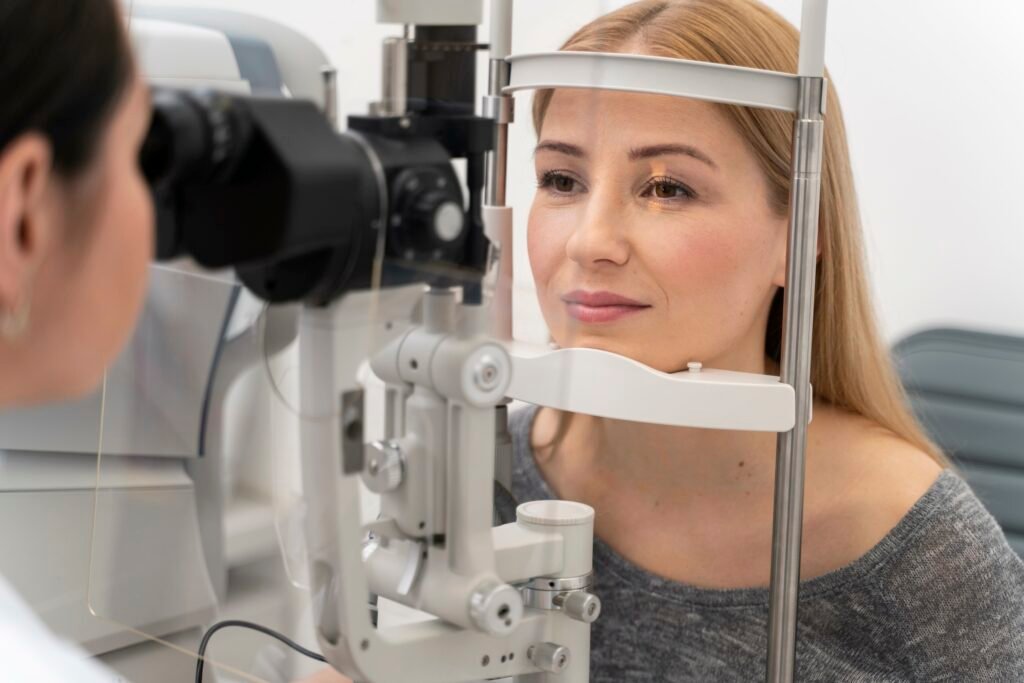In today’s sedentary lifestyle, back and neck pain have become increasingly common problems affecting people of all ages. Poor posture is often a significant contributing factor to these issues. By understanding the importance of good posture and implementing simple techniques in our daily lives, we can significantly reduce the risk of developing chronic pain and improve our overall well-being. This article will explore various tips and techniques for maintaining proper posture and preventing back and neck pain, with insights from the best orthopaedic doctor in Kota.
Understanding Posture and Its Impact on Health
Posture refers to the position in which we hold our bodies while standing, sitting, or lying down. Good posture involves training your body to stand, walk, sit, and lie in positions where the least strain is placed on supporting muscles and ligaments during movement or weight-bearing activities. The top orthopedic doctor in Kota emphasizes that maintaining proper posture is crucial for several reasons:
- Reduces strain on muscles and joints
- Improves balance and coordination
- Enhances breathing and circulation
- Boosts energy levels and reduces fatigue
- Prevents the development of chronic pain conditions
Common Postural Problems
Before diving into solutions, it’s essential to understand common postural problems that the best orthopedic doctor in Kota frequently encounters:
- Forward Head Posture: Often seen in individuals who spend long hours looking at screens, this condition occurs when the head juts forward, out of alignment with the spine.
- Rounded Shoulders: This posture is characterized by shoulders that round forward, often accompanied by an increased upper back curve.
- Anterior Pelvic Tilt: This occurs when the pelvis tilts forward, increasing the curve in the lower back.
- Swayback: This posture is marked by an exaggerated inward curve of the lower back.
- Flat Back: In this posture, the normal curves of the spine are reduced, leading to increased stress on the lower back.
Tips for Improving Posture in Everyday Life
The best orthopedic in Kota recommends the following tips to improve posture and prevent back and neck pain:
- Awareness is Key
The first step in improving posture is becoming aware of your body position throughout the day. Regularly check your posture and make conscious efforts to correct it when you notice yourself slumping or slouching.
- Ergonomic Workspace Setup
For those who spend long hours at a desk, proper ergonomics are crucial. The orthopaedic doctor in Kota suggests:
- Adjust your chair height so your feet are flat on the floor and knees are level with hips.
- Position your computer monitor at eye level to avoid neck strain.
- Use a chair with good lumbar support or add a cushion for lower back support.
- Keep your keyboard and mouse close to prevent reaching and straining.
- Practice Proper Sitting Posture
When sitting, the ortho doctor in Kota recommends:
- Sit back in your chair with your back straight and shoulders relaxed.
- Keep your feet flat on the floor or use a footrest if needed.
- Avoid crossing your legs for extended periods.
- Take regular breaks to stand up and stretch.
- Standing Posture Techniques
For improved standing posture:
- Stand with your weight evenly distributed on both feet.
- Keep your shoulders back and chest open.
- Engage your core muscles to support your spine.
- Avoid locking your knees.
- Sleeping Posture Matters
Your sleeping position can significantly impact your posture. The Kota best orthopedic doctor advises:
- Sleep on a supportive mattress and pillow.
- If sleeping on your side, place a pillow between your knees to keep your spine aligned.
- When sleeping on your back, place a small pillow under your knees to reduce lower back strain.
- Strengthen Core and Back Muscles
A strong core and back provide better support for your spine. Incorporate exercises that target these muscle groups into your routine, such as:
- Planks
- Bridges
- Yoga or Pilates classes
- Stretch Regularly
Regular stretching can help improve flexibility and reduce muscle tension. Focus on stretches for the neck, shoulders, back, and hips. The best orthopaedic doctor in Kota can provide guidance on specific stretches tailored to your needs.
- Use Technology Mindfully
In today’s digital age, “tech neck” has become a common problem.
To prevent this:
- Hold your smartphone at eye level when texting or browsing.
- Use a tablet stand to prop up your device.
- Take regular breaks from screens and practice neck stretches.
- Maintain a Healthy Weight
Excess weight, especially around the midsection, can pull your pelvis forward and strain your lower back. Maintaining a healthy weight through proper diet and exercise can significantly improve posture and reduce back pain.
- Wear Comfortable, Supportive Shoes
The top orthopedic doctor in Kota emphasizes the importance of proper footwear. Avoid high heels for extended periods and opt for shoes with good arch support and cushioning.
- Practice Mindfulness and Body Awareness
Techniques like yoga, tai chi, and mindfulness meditation can increase body awareness and help you maintain better posture throughout the day.
- Use Posture-Supporting Devices Wisely
While posture correctors and braces can be helpful in the short term, it’s important not to rely on them exclusively. Use them as a reminder to maintain good posture, but focus on strengthening your muscles for long-term benefits.
Exercises to Improve Posture
The best orthopedic doctor in Kota recommends incorporating the following exercises into your daily routine to improve posture:
- Wall Angels: Stand with your back against a wall and perform arm raises, keeping your arms in contact with the wall throughout the movement.
- Chin Tucks: Gently tuck your chin down and back, creating a “double chin.” Hold for 5-10 seconds and repeat.
- Shoulder Blade Squeezes: Sit or stand with your arms at your sides. Squeeze your shoulder blades together, hold for 5-10 seconds, and release.
- Pelvic Tilts: Lie on your back with knees bent. Tilt your pelvis to flatten your lower back against the floor, then release.
- Cat-Cow Stretch: On your hands and knees, alternate between arching your back (cow pose) and rounding it (cat pose).
- Thoracic Extension: Sit in a chair and place your hands behind your head. Gently arch your upper back over the chair, looking up towards the ceiling.
When to Seek Professional Help
While these tips and exercises can significantly improve posture and reduce pain, there are times when it’s crucial to consult the best orthopaedic doctor in Kota. Seek professional help if:
- You experience persistent pain that doesn’t improve with self-care measures.
- You notice a significant change in your posture or spine curvature.
- You have difficulty performing daily activities due to pain or stiffness.
- You experience numbness, tingling, or weakness in your arms or legs.
The Role of Regular Check-ups
Regular check-ups with the orthopaedic doctor in Kota can help identify postural issues early and prevent them from developing into more serious problems. These check-ups may include:
- Postural assessments
- Range of motion tests
- Strength evaluations
- Imaging studies if necessary
By catching and addressing postural problems early, you can avoid chronic pain and maintain better overall health.
Conclusion
Improving your posture is a journey that requires awareness, consistency, and patience. By incorporating these tips and techniques into your daily life, you can significantly reduce the risk of developing back and neck pain and improve your overall quality of life. Remember, good posture is not just about standing up straight – it’s about creating a strong, flexible, and balanced body that can support you through all of life’s activities.
FAQs
1. How long does it take to see improvements in posture?
A: Dr. Ankur Jain, Kota: While some improvements can be felt immediately, significant changes in posture typically take 4-6 weeks of consistent practice. However, this can vary depending on individual factors and the severity of postural issues.
2. Can poor posture cause health problems beyond back and neck pain?
A: Dr. Ankur Jain, Kota: Yes, poor posture can contribute to various health issues, including headaches, digestive problems, breathing difficulties, and even mood disorders. It’s important to address postural issues holistically.
3. Is it ever too late to improve posture?
A: Dr. Ankur Jain, Kota: It’s never too late to start improving your posture. While it may take more time and effort to correct long-standing postural issues, consistent practice can lead to significant improvements at any age.
4. Are standing desks beneficial for posture?
A: Dr. Ankur Jain, Kota: Standing desks can be beneficial when used correctly. However, it’s important to alternate between sitting and standing throughout the day and maintain proper posture in both positions.
5. How often should I take breaks to improve my posture when working at a desk?
A: Dr. Ankur Jain, Kota: I recommend taking a short break every 30-45 minutes to stand, stretch, and reset your posture. Even a 1-2 minute break can make a significant difference.
Don’t let poor posture hold you back from living your best life. Take the first step towards better posture and a pain-free future by scheduling a consultation with Dr. Ankur Jain, the best orthopedic doctor in Kota. With his expertise in postural assessment and personalized treatment plans, Dr. Ankur Jain will help you achieve optimal musculoskeletal health. Don’t wait for pain to become chronic – proactive care is key to maintaining a healthy, active lifestyle. Contact Dr. Ankur Jain’s office today and invest in your long-term well-being. Your body will thank you for years to come!






